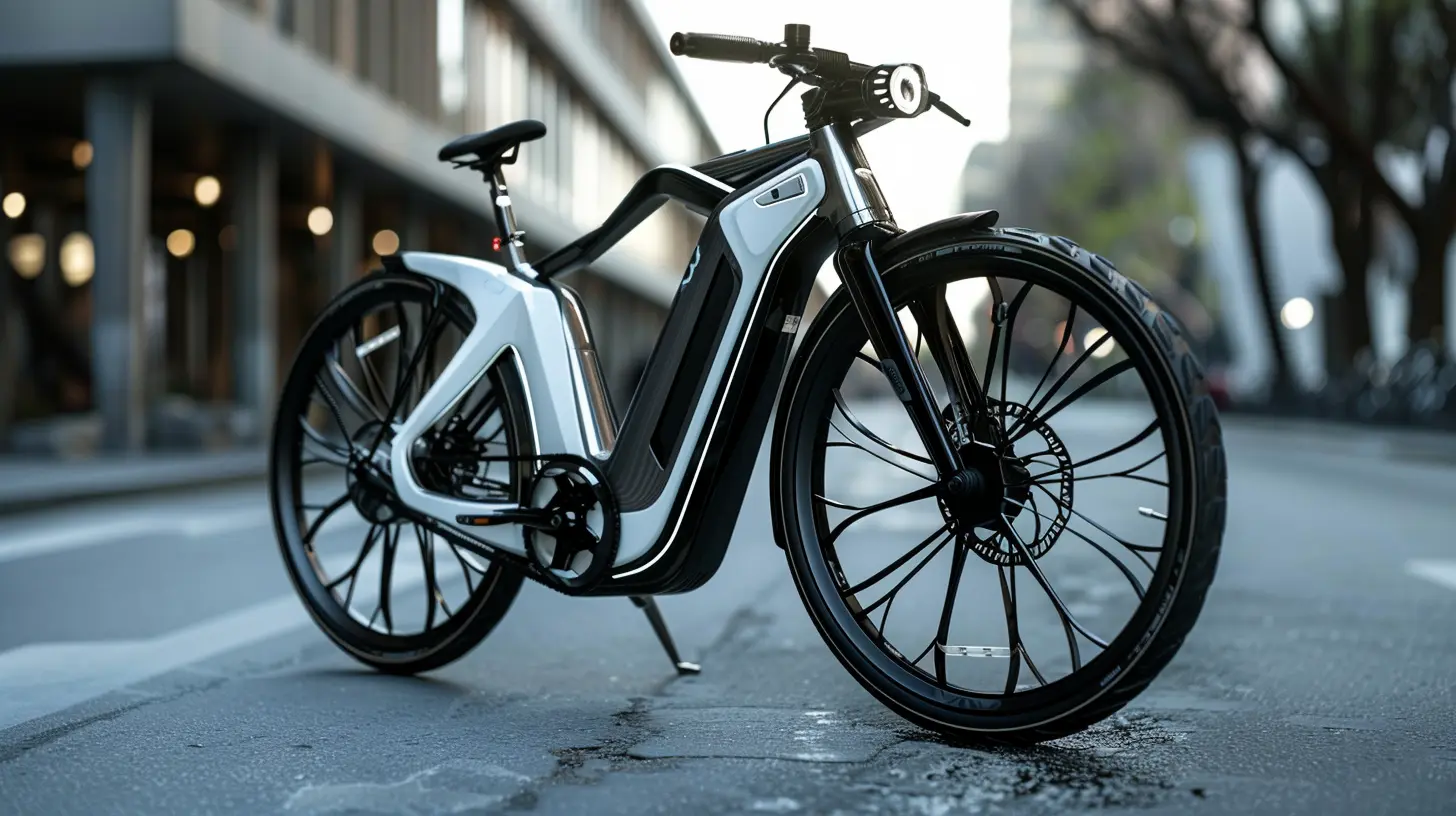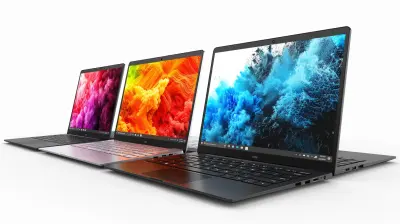E-Bikes and the Sharing Economy: The Next Big Thing in Urban Travel
22 March 2025
If you’ve ever found yourself stuck in bumper-to-bumper traffic, staring longingly at the empty bike lane, you’ve likely considered how amazing it would be to just hop on an e-bike and zip past all the chaos. Well, guess what? That dream is not as far-fetched as it used to be. Thanks to the rise of the sharing economy, e-bikes are becoming the next big thing in urban travel.
Urban transportation is evolving faster than ever. Cities are growing, and so are the challenges that come with them—congestion, pollution, and the ever-increasing need for sustainable travel options. Enter the e-bike, a game-changing solution that’s not only eco-friendly but also seamlessly fits into the new sharing economy. Let's dive into why e-bikes and the sharing economy are revolutionizing the way we move around cities.

What Are E-Bikes, and Why Are They So Popular?
Before we jump into the sharing part of the equation, let’s break down what makes an e-bike so special. An e-bike, or electric bike, is just like a regular bicycle, but with a little extra oomph. It comes with an electric motor that assists you while pedaling, making it easier to go uphill or cover longer distances without breaking a sweat.The Appeal of E-Bikes
So, why are e-bikes becoming a hot trend? Simple: convenience and flexibility. Unlike traditional bikes, e-bikes allow you to control how much effort you want to put in. Feeling energetic? Pedal more. Feeling lazy? Let the motor do most of the work. It’s like having a bike with superpowers.E-bikes also have a smaller carbon footprint compared to cars and even public transit. In a world where more people are becoming environmentally conscious, that’s a huge selling point. Add in the fact that they’re cheaper than cars, require minimal maintenance, and can zip through traffic, and it’s easy to see why e-bikes are becoming the go-to for city dwellers.

The Sharing Economy: A Quick Refresher
Now, let’s talk about the sharing economy. In the simplest terms, the sharing economy is all about sharing resources. Think of companies like Uber, Airbnb, or even your local bike-sharing service. Rather than owning something outright, you just pay to use it when you need it. It's a win-win: you save money, and the environment gets a break because fewer resources are being used up.The sharing economy has already revolutionized several industries—transportation being one of the biggest. The rise of ride-hailing apps like Uber and Lyft has made car ownership seem less necessary, especially in urban areas where parking is a nightmare and public transit is readily available. Now, e-bikes are jumping on the bandwagon (or should I say bike rack?).

E-Bikes and the Sharing Economy: A Perfect Pairing
Okay, so we’ve established that e-bikes are cool, and the sharing economy is transforming how we access goods and services. But why are these two concepts such a perfect match for each other?1. Affordable and Accessible for Everyone
One of the biggest barriers to owning an e-bike is the upfront cost. High-quality e-bikes can easily run you upwards of $1,000, which is a hefty price tag for most people. But with the sharing economy, you don’t have to worry about that. E-bike sharing services allow users to rent a bike on a short-term basis, whether it’s for a quick ride across town or a full-day adventure.This makes e-bikes accessible to everyone, not just those who can afford to buy them. Think of it like Netflix, but for getting around: you pay for what you need, when you need it.
2. Solving the "Last-Mile" Problem
Urban travelers are all too familiar with the dreaded “last mile” problem. You know, when public transit gets you close to your destination but not quite there? E-bikes are the perfect solution for that final stretch. Instead of walking 20 minutes or waiting for a slow bus, you can hop on an e-bike and be there in no time.E-bike sharing systems are popping up in cities all over the world, often integrated with other modes of transportation like trains and buses, making it easier than ever to complete your journey. You can unlock an e-bike with your smartphone, ride to your destination, and drop it off at a docking station or even leave it at a designated area. Easy peasy.
3. Reducing Traffic Congestion and Pollution
Cars are a huge contributor to urban congestion and pollution. It’s no secret that cities are becoming more crowded, and more cars on the road mean more traffic jams and more harmful emissions. E-bikes offer a greener alternative that doesn’t take up as much space or spew toxic fumes into the atmosphere.By encouraging more people to use e-bikes rather than cars, cities can reduce traffic congestion, lower pollution levels, and make streets more pedestrian-friendly. And because e-bikes are quicker than traditional bikes, they’re more likely to appeal to a broader audience, including people who might not consider cycling otherwise.
4. Health and Wellness Benefits
Let’s not forget the health aspect of it all. While e-bikes do provide motor-assisted pedaling, you’re still getting a workout. Riding an e-bike is a great way to stay active, and you can choose how much effort you want to put in. According to studies, even a light cycling workout can help improve cardiovascular health, boost mental well-being, and reduce stress.And when you use an e-bike in a shared system, you’re more likely to incorporate it into your daily routine—whether it’s commuting to work or running errands. That’s a double win: you get where you’re going faster and healthier.

How Cities Are Adapting to E-Bikes in the Sharing Economy
The growing popularity of e-bikes has forced city planners to rethink urban infrastructure. Many urban areas are now focusing on becoming more bike-friendly, with dedicated lanes, improved bike parking, and new laws to regulate e-bike use.Expanding Bike Lanes
Cities like New York, London, and Paris are expanding their bike lane networks to accommodate the surge in cyclists, particularly those using e-bikes. These lanes offer a safer, more predictable route for riders and reduce the chances of accidents with pedestrians and motorists.Docking Stations and Smart Technology
Many e-bike sharing systems use docking stations where users can pick up and drop off bikes. Others are dockless, relying on GPS tracking and smartphone apps to allow riders to locate and rent bikes. This flexibility has made e-bike sharing more convenient than ever, as users can find a bike close to them and leave it when they’re done.Incentives for E-Bike Adoption
Some cities are even offering incentives to encourage residents to use e-bikes. For example, certain local governments offer subsidies or tax breaks for people who opt for e-bike sharing services. Others are implementing car-free zones or congestion pricing to nudge more people toward cycling as a preferred mode of transport.Challenges Facing E-Bike Sharing Systems
Of course, no system is perfect, and e-bike sharing comes with its own set of challenges.Theft and Vandalism
One of the biggest hurdles is theft and vandalism. Because shared bikes are left in public spaces, they’re more vulnerable to being stolen or damaged. To combat this, companies are equipping bikes with GPS trackers and sturdy locks. Some are even turning to “smart bikes” that can automatically lock themselves when not in use.Maintenance
Another challenge is keeping the bikes in good working order. Since e-bikes have more components than regular bikes, they require more maintenance. Sharing companies must ensure their fleet is regularly serviced, which can be a logistical headache, especially in larger cities.Regulatory Issues
Lastly, there are regulatory hurdles. Not all cities have clear guidelines on where e-bikes can be ridden, how fast they can go, or whether they should be treated like bicycles or motor vehicles. As e-bikes become more popular, we can expect to see more regulations put in place to address these issues.
The Future of E-Bikes and the Sharing Economy
Despite the challenges, the future looks bright for e-bikes in the sharing economy. As more cities invest in sustainable transportation options, e-bikes are poised to become a key player in the urban transportation landscape.With advancements in battery technology, we can expect e-bikes to become even more efficient, with longer ranges and quicker charging times. Plus, as more people embrace the sharing economy, we’ll likely see an increase in innovative e-bike sharing models, making it easier than ever to ride one.
The future of urban travel is electric, and e-bikes are leading the charge.
Conclusion
E-bikes and the sharing economy are a match made in heaven. They offer a flexible, affordable, and eco-friendly solution to many of the problems facing urban transportation today. Whether you’re looking to beat the traffic, reduce your carbon footprint, or just enjoy a breezy ride through the city, e-bikes are the way to go.So, the next time you're stuck in traffic or crammed into a subway car, remember: an e-bike could be just a few taps away. Why not give it a try?
all images in this post were generated using AI tools
Category:
Electric BicyclesAuthor:

Marcus Gray
Discussion
rate this article
9 comments
Kova Franco
Great insights! E-bikes are definitely revolutionizing urban travel and perfectly align with the sharing economy. They’re not just eco-friendly and efficient but also incredibly fun! Can’t wait to see how cities evolve with more e-bike initiatives. Here’s to a greener, more connected future on our streets! 🚴♂️✨
May 17, 2025 at 12:06 PM

Marcus Gray
Thank you! I completely agree—e-bikes are transforming urban mobility while promoting sustainability and connectivity. Exciting times ahead! 🚴♀️✨
Quade Moses
Great insights on the intersection of e-bikes and the sharing economy! It's exciting to see how this innovation can reshape urban travel, making it more sustainable and accessible. Looking forward to seeing how it evolves!
April 8, 2025 at 12:05 PM

Marcus Gray
Thank you for your positive feedback! I’m excited to see how e-bikes will continue to shape urban mobility.
Elena McFadden
Great article! E-bikes are revolutionizing urban travel and perfectly fit into the sharing economy. Excited to see how this trend continues to shape our cities and commuting habits!
April 7, 2025 at 6:27 PM

Marcus Gray
Thank you! I'm glad you enjoyed the article. E-bikes truly are transforming urban mobility, and it’s exciting to see how they will shape our future cities!
Olympia McNair
E-bikes revolutionize urban mobility, blending convenience and sustainability in the sharing economy's future.
April 6, 2025 at 8:38 PM

Marcus Gray
Thank you for your insightful comment! E-bikes indeed offer a transformative solution for urban mobility, promoting both sustainability and convenience in our cities.
Matilda Sharpe
Great read! E-bikes are revolutionizing urban travel and the sharing economy. Excited to see how this trend evolves and influences our cities for the better!
April 4, 2025 at 8:59 PM

Marcus Gray
Thank you! I completely agree—e-bikes are transforming urban mobility and shaping a more sustainable future for our cities. Exciting times ahead!
Leona Reilly
E-bikes truly transform urban travel, promoting sustainability and accessibility. Excited to see their impact on our cities!
April 2, 2025 at 7:01 PM

Marcus Gray
Thank you! E-bikes are indeed revolutionizing urban travel, making it greener and more accessible for everyone. Exciting times ahead!
Caden Lozano
This article raises fascinating questions about the future of urban mobility! How will e-bike sharing reshape our cities, and could it be the key to sustainable transport solutions? Exciting times ahead!
March 26, 2025 at 8:49 PM

Marcus Gray
Thank you! I'm glad you found the article engaging. E-bike sharing has the potential to significantly enhance urban mobility and contribute to sustainability. Exciting times indeed!
Denise Jennings
E-bikes enhance urban mobility; sharing transforms travel convenience.
March 26, 2025 at 3:20 AM

Marcus Gray
Thank you! E-bikes and sharing indeed revolutionize urban travel by making it more accessible and convenient for everyone.
Anabella Underwood
E-bikes are revolutionizing urban travel by integrating seamlessly into the sharing economy. They offer a sustainable, efficient alternative to traditional transportation, reducing congestion and emissions. As cities invest in bike lanes and infrastructure, e-bike sharing could transform commuting, making it more accessible and eco-friendly for everyone.
March 25, 2025 at 3:28 AM

Marcus Gray
Absolutely! E-bikes are indeed a game-changer for urban travel, promoting sustainability and improving accessibility while complementing the growing sharing economy.
MORE POSTS

How to Choose the Perfect Mechanical Keyboard for Your Setup

The Most Versatile Multi-Tools for Tech Enthusiasts

Exploring the Kotlin Programming Language for Modern Android Development

Portable Powerhouses: The Best Compact Laptops for Productivity

A Beginner's Guide to Setting Up Your Smart Speaker

The Best Dash Cams for Your Car: Capturing Every Moment

How to Automate Testing with Developer-First Tools